Intro to 481 - Sketching User Experiences: The Workbook
advertisement
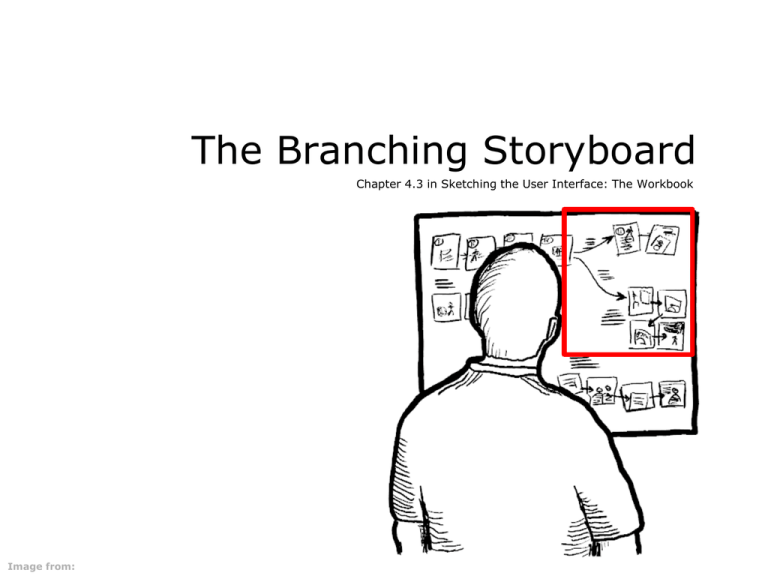
The Branching Storyboard Chapter 4.3 in Sketching the User Interface: The Workbook Image from: Storyboards will Contain Branches Multiple transitions from a state Result of • user actions • environmental actions • system configuration… Image from: Anderson et. Al. Buttress. Usenix Fast ‘04 Exercise Your digital (or cell phone) Construct state transition diagrams to • capture a simple branching sequential operation • illustrates the techniques of o abstract diagram o visual interface diagram o indexed diagram The Abstract Branching Diagram Visual Interface Branching Diagram Visual Interface Branching Diagram By interface hot spots… Computer Telephone Last Name: First Name: Phone: Place Call Help Computer Telephone Help You can enter either the person's name or their Last Name: number. Then First Name: hit the place button to call them Phone: Place Call Return Help Computer Telephone Computer Telephone Last Name: Greenberg First Name: Phone: Dialling.... Last Name: Greenberg First Name: Cancel Phone: Place Call Place Call Help Help Indexed Branching Diagram Indexed Branching Diagram The Catalog Shopping System - see chapter 4.1 Brick and mortar store • • • • • • paper catalogs scan in desired item(s) with bar code reader see item on computer screen complete and pay for order (which submits it) print it and bring to sales clerk sales clerk gives you item Storyboard • buy a blue stroller The Catalog Shopping System Extend it to allow a person to • scan 2 or more items • modify items in the list • print out the list, then come back later and scan in the list • not buy anything o walk away o explitely cancel the order Overview Map – The Basic Operation 2 Scanning in Multiple Items 3 Changing item options 4 removing items 5 print for later 6 Place order 7 Switching between items Interacting with a PDA-based Agenda Bill Buxton Sketching User Experiences, Morgan Kaufman Figure 99, p 284 Interacting with a PDA-based Agenda Bill Buxton Sketching User Experiences, Morgan Kaufman Figure 99, p 284 Interacting with a PDA-based Agenda The Overview map (where are we?) Bill Buxton Sketching User Experiences, Morgan Kaufman Figure 99, p 284 Interacting with a PDA-based Agenda Looking at the agenda and seeing that there is a 10am meeting with someone named Mary Ford Bill Buxton Sketching User Experiences, Morgan Kaufman Figure 99, p 284 Check to see what the meeting is about Click on that time slot Bill Buxton Sketching User Experiences, Morgan Kaufman Figure 99, p 284 Choosing how to contact Mary Click on Mary’s name Bill Buxton Sketching User Experiences, Morgan Kaufman Figure 99, p 284 Sending Mary a text message concering the ‘Tour’ which is the topic of the meeting Select Message from menu Bill Buxton Sketching User Experiences, Morgan Kaufman Figure 99, p 284 Select Message Bill Buxton Sketching User Experiences, Morgan Kaufman Figure 99, p 284 1From Carloyn Snyder’s Book Paper Prototyping (2003) Morgan Kaufmann, p11 You Now Know Branching storyboards • multiple transitions from a state • illustrate decision paths • manage complexity • can be decomposed to sequential storyboards or simple branching storyboards Permissions You are free: • to Share — to copy, distribute and transmit the work • to Remix — to adapt the work Under the following conditions: Attribution — You must attribute the work in the manner specified by the author (but not in any way that suggests that they endorse you or your use of the work) by citing: “from presentations accompanying the book ‘Sketching User Experiences, the Workbook’, by S. Greenberg, S. Carpendale, N. Marquardt and B. Buxton” Noncommercial — You may not use this work for commercial purposes, except to assist one’s own teaching and training within commercial organizations. Share Alike — If you alter, transform, or build upon this work, you may distribute the resulting work only under the same or similar license to this one. With the understanding that: Not all material have transferable rights — materials from other sources which are included here are cited Waiver — Any of the above conditions can be waived if you get permission from the copyright holder. Public Domain — Where the work or any of its elements is in the public domain under applicable law, that status is in no way affected by the license. Other Rights — In no way are any of the following rights affected by the license: • Your fair dealing or fair use rights, or other applicable copyright exceptions and limitations; • The author's moral rights; • Rights other persons may have either in the work itself or in how the work is used, such as publicity or privacy rights. Notice — For any reuse or distribution, you must make clear to others the license terms of this work. The best way to do this is with a link to this web page.
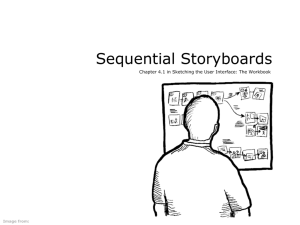
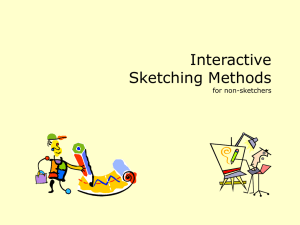

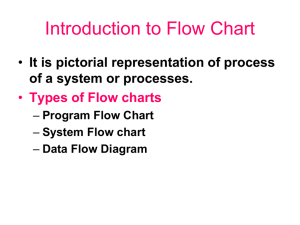
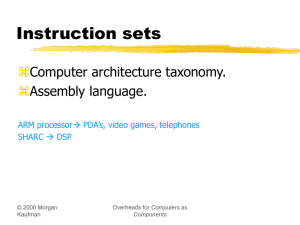
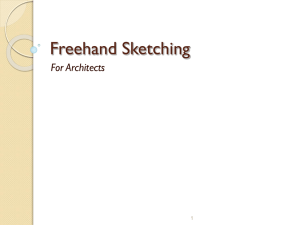
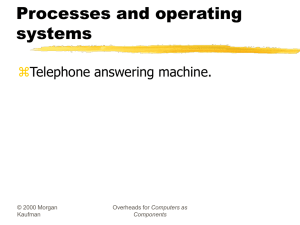


![Branching Out: An Introduction to Family History [pptx , 2.3 MB]](http://s2.studylib.net/store/data/005232376_1-8bb1ea3bff509441ce8b545117622545-300x300.png)

